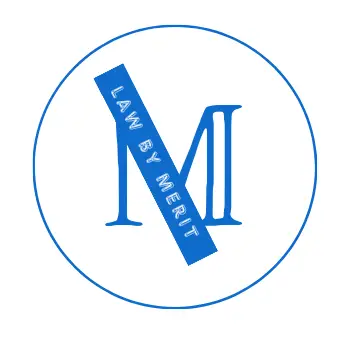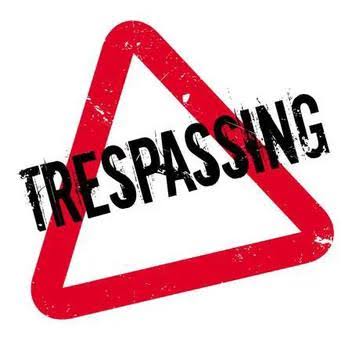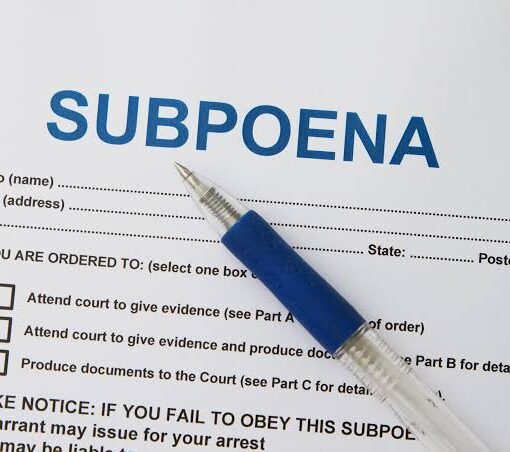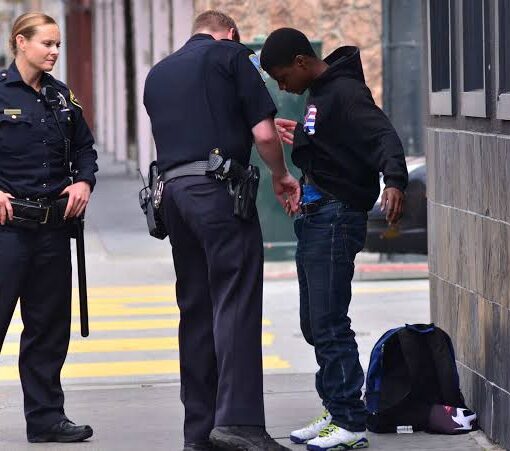TBUT and DISP are legal terms that encompass a wide spectrum of criminal activities related to theft, fraud, and deceptive practices. These terms play a pivotal role within the legal system by categorizing and describing various offenses, allowing law enforcement, legal professionals, and the judiciary to better understand, investigate, and address unlawful actions that involve the unauthorized acquisition of property, money, or services through different means.
What is TBUT or DISP?
TBUT, which stands for Taking, Breaking, Unlawful Transfer, encapsulates a range of criminal behaviors involving the unlawful acquisition of property. It encompasses various acts, such as physically taking possession of another person’s belongings without their consent, breaking into a property to access its contents illicitly, or engaging in the unauthorized transfer of property. This term is often used to describe theft-related offenses where the perpetrator obtains items or assets through unauthorized means, and it serves as an umbrella term for a variety of property-related crimes.
DISP, which stands for Deception, Illegal Scheme, Practices, covers a broader set of offenses that revolve around fraudulent practices, manipulation, and dishonesty. This term is employed to categorize offenses where individuals or entities engage in actions aimed at deceiving others for personal or financial gain. DISP encompasses a wide range of deceitful practices, such as false advertising, Ponzi schemes, identity theft, and other forms of white-collar crime. It encompasses activities that may not involve physical taking but instead involve the manipulation of information or trust to achieve illicit goals.
In essence, both TBUT and DISP are labels used to differentiate and categorize criminal activities based on their nature and methodology. These terms are essential tools for legal professionals, as they facilitate the classification of offenses, aid in communication among law enforcement and legal experts, and guide decision-making throughout the criminal justice process. They are a fundamental part of maintaining order within society by identifying, addressing, and appropriately punishing unlawful behaviors that undermine the principles of justice, fairness, and respect for the rights of others.
Meaning of TBUT or DISP Auto (Automobile Theft):
TBUT or DISP Auto refers specifically to the theft or unlawful transfer of automobiles, including cars, trucks, and other motor vehicles. This offense involves the unauthorized taking or transfer of a motor vehicle with the intent to permanently deprive the rightful owner of their property. It can encompass a variety of scenarios, from traditional car theft to more sophisticated methods of vehicle acquisition using deceptive practices or illegal schemes.
Meaning of TBUT or DISP Firearm (Firearm Theft):
TBUT or DISP Firearm pertains to the theft or illegal transfer of firearms. This offense involves the unauthorized taking or transfer of firearms, such as handguns, rifles, or shotguns, with the intent to deprive the lawful owner of their possession. Given the potential danger associated with stolen firearms falling into the wrong hands, the legal system takes such cases seriously to prevent potential harm to individuals and communities.
Meaning of TBUT or DISP Shoplifting:
TBUT or DISP Shoplifting refers to the act of stealing merchandise from a retail establishment without paying for it. Shoplifting involves intentionally concealing items, altering price tags, or manipulating electronic surveillance systems to avoid detection while leaving the store without paying. This type of theft can range from small-scale incidents involving minor items to more elaborate schemes involving coordinated efforts and larger values of stolen goods.
Meaning of TBUT or DISP All Others (Other Theft and Fraud Cases):
TBUT or DISP All Others is a category that encompasses theft and fraud cases not specifically covered by the previously mentioned categories. This includes a wide range of criminal activities where individuals unlawfully obtain property, money, or services through various means other than auto theft, firearm theft, and shoplifting. Examples might include embezzlement, identity theft, credit card fraud, and various forms of white-collar crime.
In the legal system, these terms serve to categorize and differentiate various types of criminal activities based on the nature of the offense and the methods used to commit them. Law enforcement, prosecutors, and the judiciary use these categorizations to guide investigations, charging decisions, and sentencing considerations. It’s important to note that legal definitions and interpretations can vary by jurisdiction, so the specific elements and consequences of these offenses might differ based on local laws and regulations.
In summary, TBUT and DISP are legal terms used to describe different types of theft, fraud, and deceptive practices. These terms encompass a wide range of criminal activities, from traditional theft to sophisticated schemes, and play a crucial role in the legal system’s efforts to maintain order and protect individuals and property from unlawful activities. Understanding these terms is essential for both legal professionals and the general public to ensure a fair and just society.
RELATED:
Who Can Sign Off On Community Service Hours?
Does An Mta Ticket Get Posted On Your Criminal Record? All You Need To Know
Hold For Another Agency: Meaning, Purpose and Significance
Frequently Asked Questions
FAQ 1: What are some examples of Deception under DISP?
Deception under DISP (Deception, Illegal Scheme, Practices) refers to a range of fraudulent practices designed to deceive individuals or entities for financial gain. Examples include:
1. Phishing Scams: Criminals send fake emails, messages, or websites that appear legitimate to trick recipients into sharing personal information, passwords, or credit card details.
2. Ponzi Schemes: Fraudsters promise high returns to investors but use funds from new investors to pay returns to earlier investors, creating a cycle of deception.
3. False Advertising: Companies make false or misleading claims about their products or services to attract customers, often resulting in financial loss for consumers.
4. Impersonation: Criminals pose as legitimate entities, such as government agencies or financial institutions, to extract sensitive information or money from unsuspecting victims.
5. Advance Fee Fraud: Victims are promised large sums of money in exchange for an upfront payment, only to realize the promised funds never materialize.
FAQ 2: What are the consequences of TBUT or DISP Auto?
TBUT or DISP Auto (Automobile Theft) is a serious offense with significant consequences. Depending on the jurisdiction and circumstances, consequences may include:
1. Criminal Charges: Offenders can face criminal charges that may result in fines, probation, community service, or even imprisonment.
2. Legal Penalties: Legal penalties may include restitution to the victim, where the offender is required to compensate the owner for the value of the stolen vehicle.
3. Insurance Implications: If the stolen vehicle was insured, the insurance company might cover the loss, but the victim could still face increased insurance premiums.
4. Impact on Victims: Automobile theft can disrupt individuals’ lives, affecting their daily routines and causing emotional distress due to the violation of personal space.
5. Recidivism: Repeat offenders may face more severe penalties, including longer prison sentences, as the legal system aims to deter habitual criminal behavior.
FAQ 3: What distinguishes TBUT or DISP Firearm from other theft crimes?
TBUT or DISP Firearm (Firearm Theft) involves the unlawful taking or transfer of firearms. What distinguishes it are:
1. Potential for Violence: Stolen firearms can be used in violent crimes, posing significant risks to public safety and law enforcement officers.
2. Stringent Regulations: Firearms are subject to strict regulations, and their theft can result in federal charges, especially if they are transported across state lines.
3. Serious Legal Consequences: Firearm theft is treated as a grave offense due to the potential for harm. Perpetrators may face lengthy prison sentences.
4. Tracing Challenges: Stolen firearms can change hands multiple times, making them difficult to trace, potentially facilitating their use in illegal activities.
5. Black Market Involvement: Stolen firearms often find their way into the black market, contributing to the illegal arms trade and posing ongoing risks to society.
FAQ 4: How can businesses prevent TBUT or DISP Shoplifting?
Businesses can take various measures to prevent TBUT or DISP Shoplifting and protect their merchandise and profits:
1. Employee Training: Train employees to recognize suspicious behavior, properly greet customers, and maintain a visible presence in the store.
2. Surveillance Systems: Install security cameras strategically to monitor high-risk areas, deter potential shoplifters, and gather evidence if theft occurs.
3. Anti-Shoplifting Devices: Implement anti-theft measures such as electronic article surveillance (EAS) tags, locks, and secured displays for high-value items.
4. Customer Service: Offer excellent customer service to engage shoppers and discourage them from attempting theft.
5. Clear Signage: Display signs indicating that shoplifting is prohibited and legal consequences will be pursued.
FAQ 5: What are some examples of TBUT or DISP All Others cases?
TBUT or DISP All Others refers to theft and fraud cases not covered under specific categories. Examples include:
1. Embezzlement: Misappropriation of funds entrusted to an individual’s care, often by employees in positions of financial responsibility.
2. Identity Theft: Unauthorized use of someone’s personal information for financial gain, often involving credit card fraud and financial manipulation.
3. Credit Card Fraud: Unauthorized use of someone else’s credit card or card information to make purchases or withdraw funds.
4. Burglary: Unlawful entry into a building or property with the intent to commit a theft or another crime.
5. Forgery: Creating fake documents, signatures, or counterfeit currency to deceive and defraud individuals, businesses, or financial institutions.
In conclusion, understanding the concepts of TBUT and DISP, as well as their various categories, is essential for individuals, businesses, and legal professionals to navigate the complexities of theft, fraud, and deception in society. The broad range of criminal activities covered by these terms highlights the importance of upholding ethical and legal standards to ensure a just and secure environment for everyone.
Last updated on: April 26, 2024




